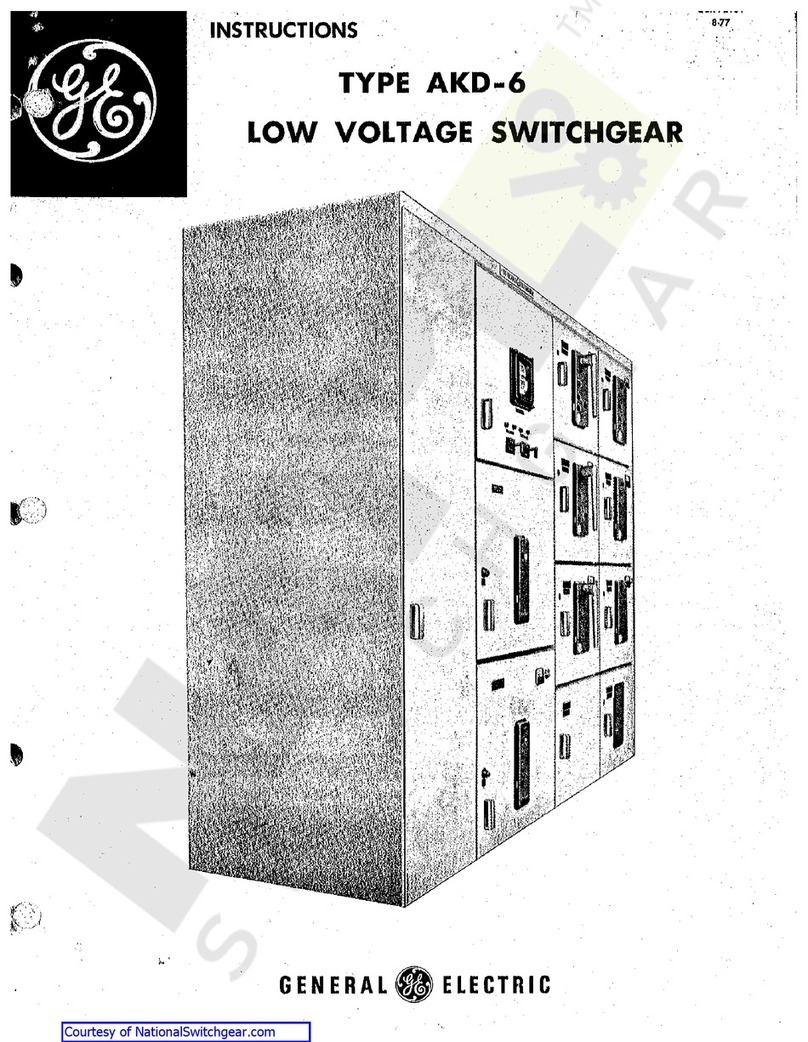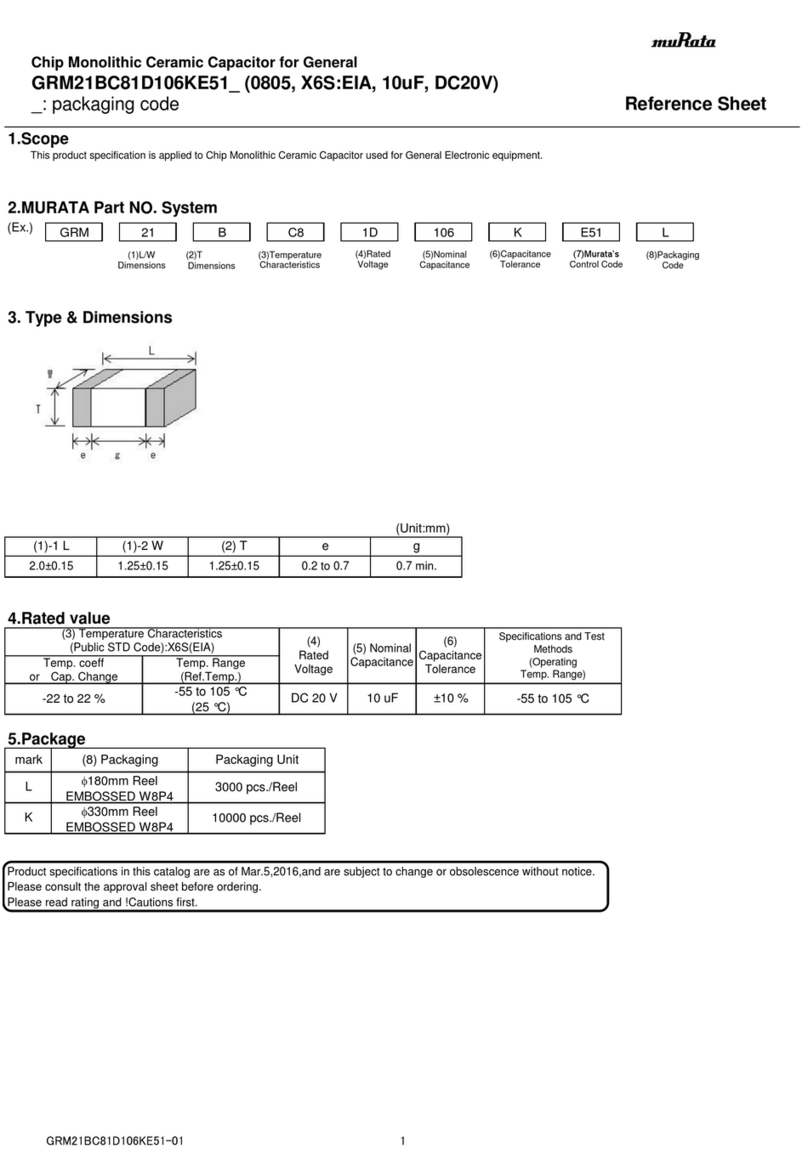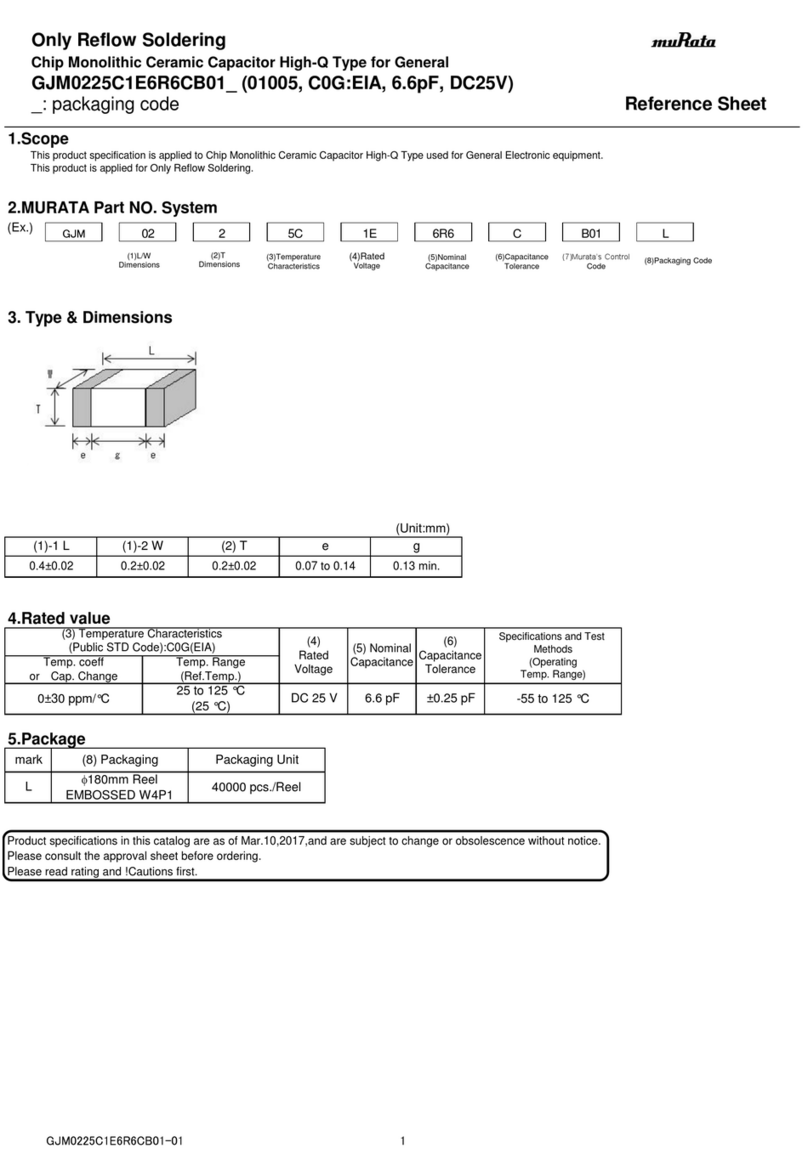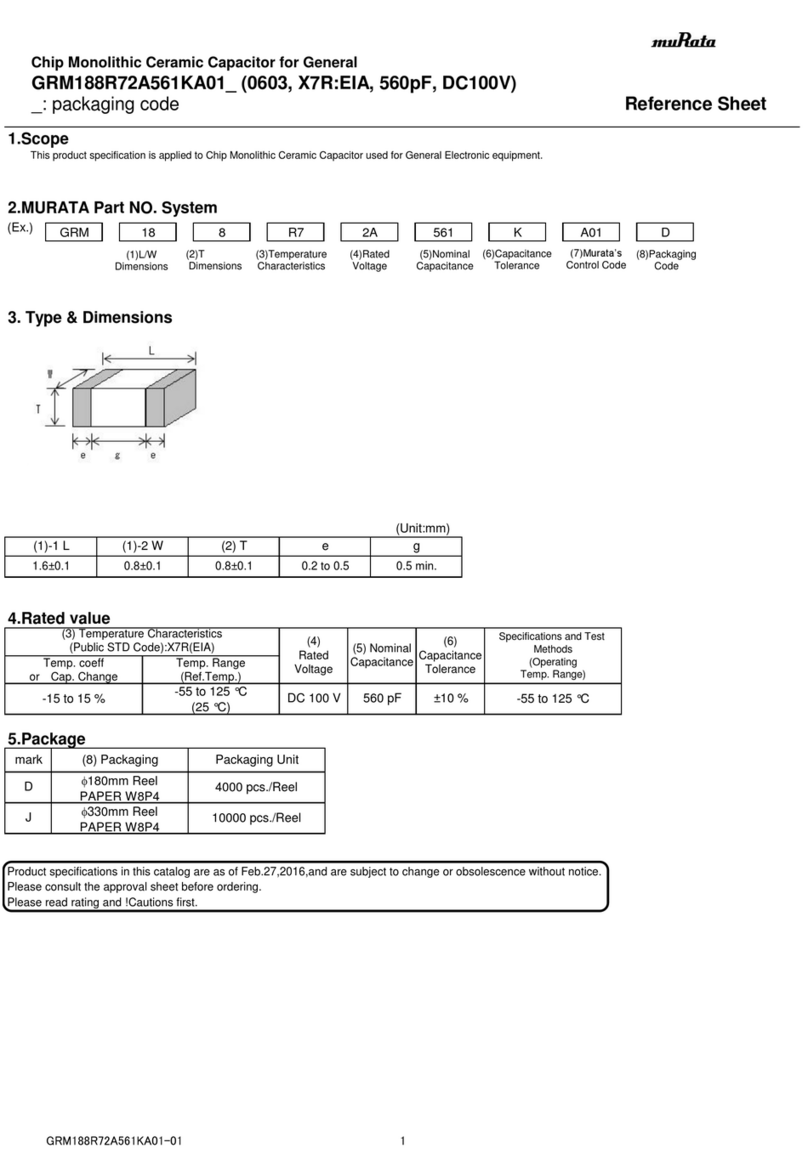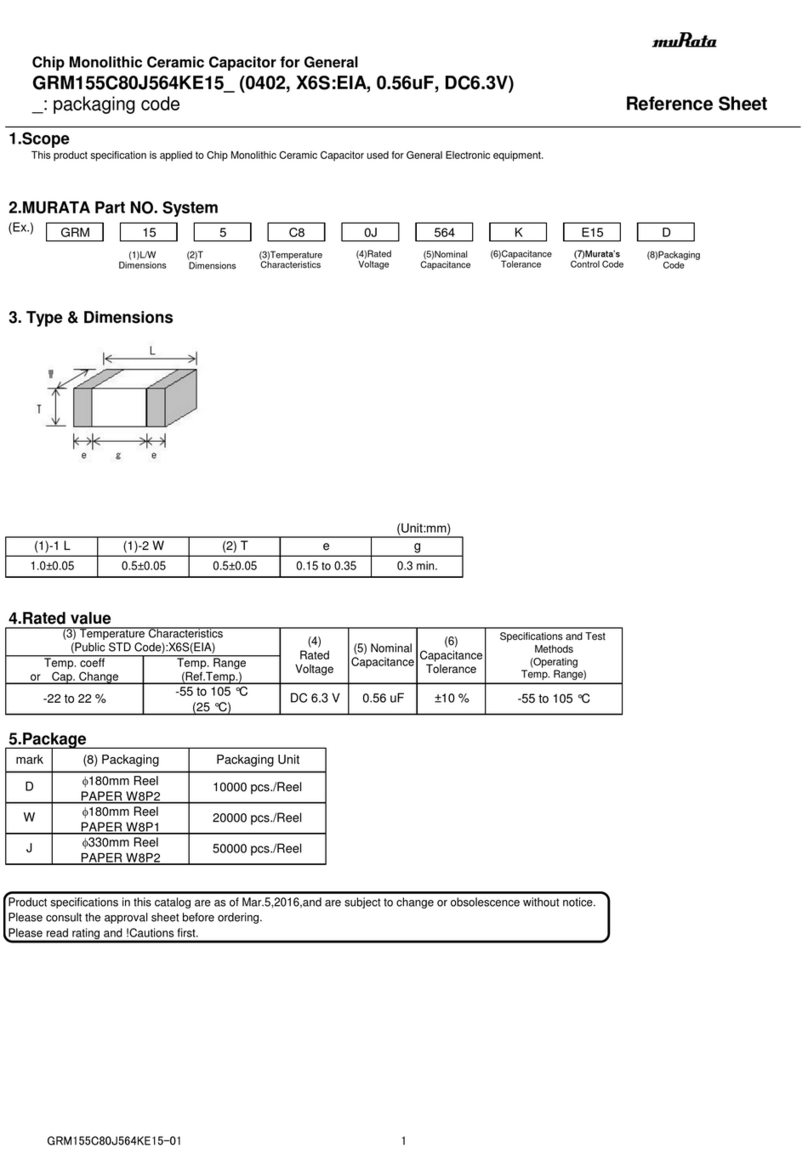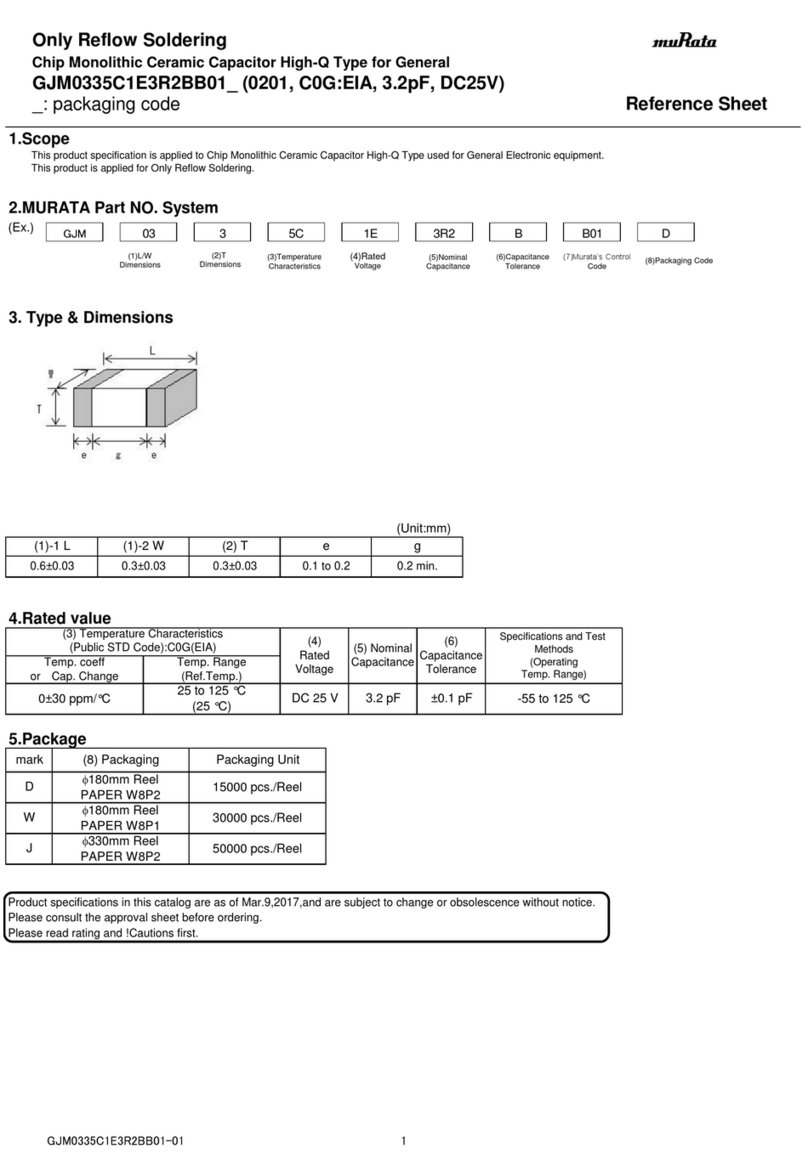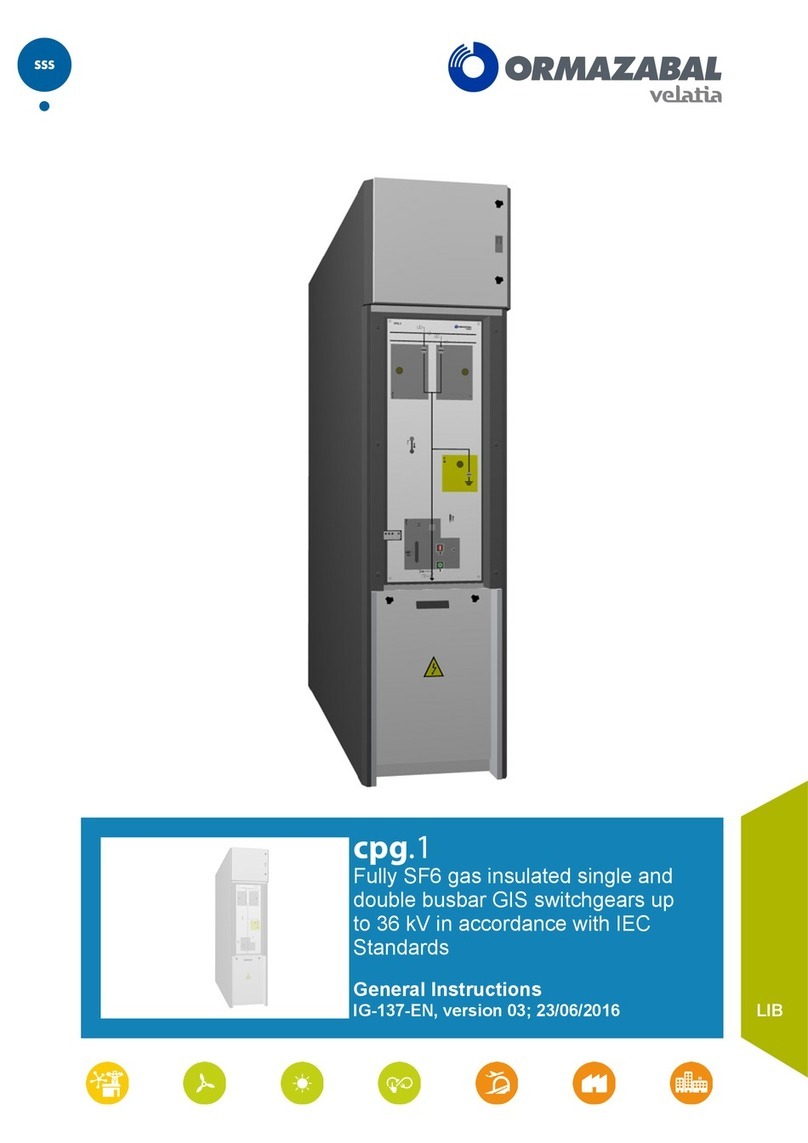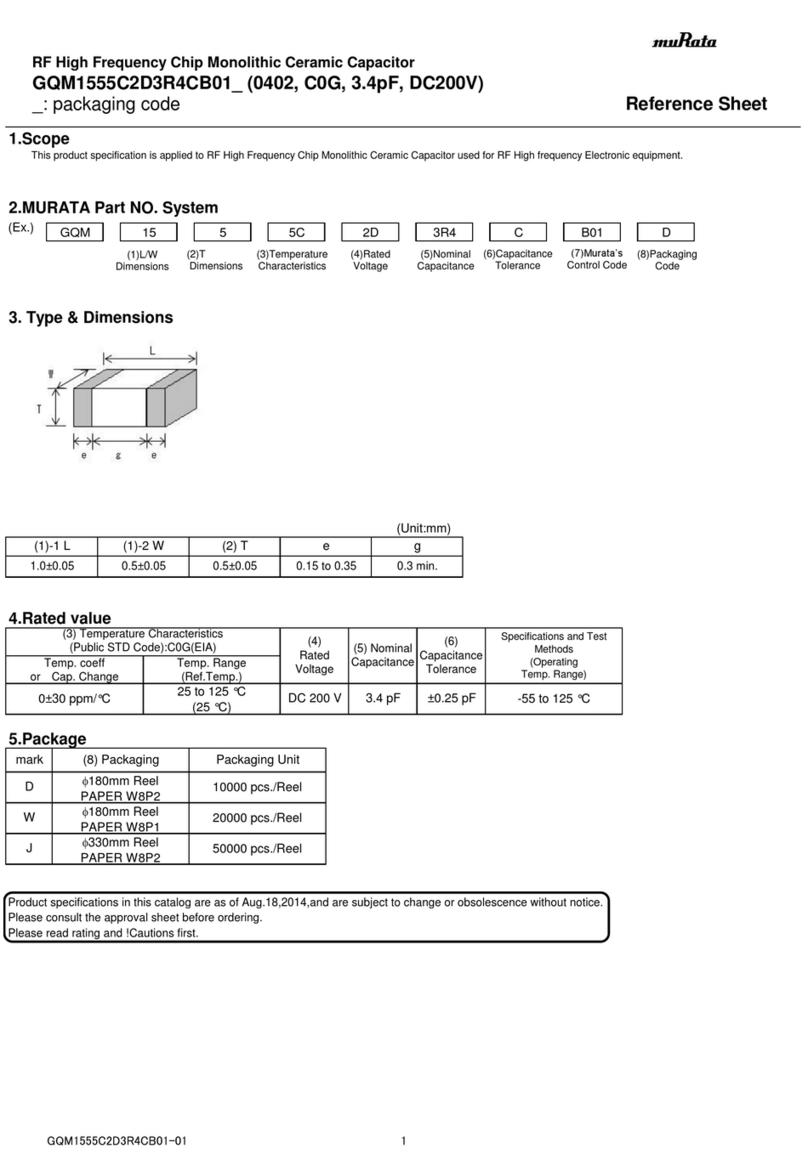efacec NORMAFIX User manual

NORMAFIX
1
NORMAFIX
Modular Distribution Switchgear
INSTRUCTIONS
Nº453030007

NORMAFIX
1
SECURITY INSTRUCTIONS
Read this manual carefully before proceeding with any handling, operation and
maintenance action. Failure to follow safety recommendations, could lead to serious
physical and material injury.
This manual should be accessible to all people involved in the installation, operation and
maintenance of the equipment.
The equipments described in this manual were designed and tested to operate within their
nominal values. Use outside this range may result in malfunction, and could cause serious
physical and material injury.
The cells and switches are equipped with safety interlocks making its use simple and
secure. Do not force them.
This equipment can be remotely controlled and contains live and mechanical parts that
move at high speed.
In the cells with circuit breakers, never perform checks on the circuit-breaker while it is
closed or with the closing springs charged. The circuit breaker must be open and the
closing springs discharged. (See the DIVAC Instruction Manual)

NORMAFIX
2
TABLE OF CONTENTS
1. GENERAL TECHNICAL CHARACTERISTICS...................................................................................................... 3
2. MODULAR UNITS............................................................................................................................................... 4
2.1 IS Cubicle ................................................................................................................................................... 4
2.2 CIS Cubicle ................................................................................................................................................. 4
2.3 DC Cubicle.................................................................................................................................................. 5
2.4 M Cubicle.................................................................................................................................................... 5
2.5 SBM Cubicle ............................................................................................................................................... 5
2.6 CD Cubicle.................................................................................................................................................. 6
2.7 TT Cubicle.................................................................................................................................................. 6
2.8 DB Cubicle.................................................................................................................................................. 6
3. OVERVIEW OF MODULAR UNITS ..................................................................................................................... 7
4. OPERATING MECHANISMS.............................................................................................................................. 10
5. SF6 SYSTEM ..................................................................................................................................................... 12
6. DISPATCH ........................................................................................................................................................ 13
7. RECEPTION...................................................................................................................................................... 13
8. INSTALLATION ................................................................................................................................................ 14
8.1 Preparing the floor ................................................................................................................................. 14
8.2 Unpacking................................................................................................................................................. 14
8.3 Installation on site.................................................................................................................................. 14
8.4 Panels assembly ...................................................................................................................................... 15
8.5 Fastening the panels to the floor......................................................................................................... 15
8.6 Connection of the earthing circuit ...................................................................................................... 16
8.7 Busbar connection .................................................................................................................................. 16
8.8 Cables connection .................................................................................................................................. 17
8.9 Toroidal transformers Cable Connections .......................................................................................... 19
8.10 Assembling of fuses .............................................................................................................................. 19
8.11 Definition of fuses ................................................................................................................................ 20
9. START-UP ........................................................................................................................................................ 20
9.1 Essential checking .................................................................................................................................. 20
9.2 Switchgear operations ........................................................................................................................... 20
9.3 Voltage feeding....................................................................................................................................... 20
9.4 Live cables control ................................................................................................................................. 21
9.5 Phase agreement control in “Incoming” panels ................................................................................ 21
9.6 Busbar feeding and fuses protection................................................................................................... 21
10. EXPLOITATION .............................................................................................................................................. 22
10.1. Operating mechanism operation ...................................................................................................... 22
10.2. Earth Switch opening operation (CI1 and CI2) ............................................................................... 22
10.3. Earth Switch closing operation (CI1 and CI2) ................................................................................. 23
10.4. Switch closing operation (CI1 or CS1).............................................................................................. 23
10.5. Switch opening operation (CI1 or CS1) ............................................................................................ 24
10.6. Switch closing operation and recharge for opening (CI2 - transformer protection function) 24
10.7. Switch opening operation (CI2 - transformer protection function)............................................ 25
10.8. Closing and opening operations (Vacuum Circuit Breaker, CDV mechanism) ........................... 25
10.9. Closing and opening operations (SF6 Circuit Breaker, CLR mechanism) ................................... 26
12. REPLACEMENT .............................................................................................................................................. 27
12.1 Replacing the Voltage Signalization lamps ...................................................................................... 27
12.2 Fuse replacement ................................................................................................................................. 27
12.3 Removing the automatic switch disconnector of the cubicle ....................................................... 28
12.4 Removing cover mechanism................................................................................................................ 29
13. SPARE PARTS ................................................................................................................................................ 29

NORMAFIX
3
1. GENERAL TECHNICAL CHARACTERISTICS
Rated voltage
12 kV
17,5 kV
24 kV
36 kV
Insulation level
- Power frequency (Hz - 1min)
28 kV
38 kV
50 kV
70 kV
-Lightning impulse (1,2 / 50s)
75 kV
95 kV
125 kV
170 kV
Rated current
Busbar
630 A
630 A
630 A
630 A
Incoming/Outgoing
400 A
630 A
400 A
630 A
400 A
630 A
400 A
630 A
Fuses Protection
200 A
200 A
200 A
200 A
Circuit-Breaker Protection
630 A
630 A
630 A
630 A
Rated short-time current
16 (3s) kA
20 (1s) kA
16 (3s) kA
20 (1s) kA
16 (3s) kA
20 (1s) kA
16 (3s) kA
Making capacity
40 kA
50 kA
40 kA
50 kA
40 kA
50 kA
40 kA
Frequency
50 Hz
50 Hz
50 Hz
50 Hz
Internal Arc (IAC A-FL)
16 kA (1s)
16 kA (1s)
16 kA (1s)
16 kA (1s)
Ambient temperature
-5 a 40 ºC
-5 a 40 ºC
-5 a 40 ºC
-5 a 40 ºC
Rated filling pressure (20ºC)
0,3 bar rel
0,3 bar rel
0,3 bar rel
0,3 bar rel
Category of loss of service continuity
LSC 2A (according to CEI 62271-200)
Class partition
PI (according to CEI 62271-200)
Degrees of protection (CEI 60529 e EN 50102)
IP65 (medium voltage compartment)
IP3XC (mechanism compartment)
IP 3XC (cable compartment)
IK09 (medium voltage compartment)
IK08
Standard colour
RAL 7035
Panels dimensions up to 24 kV
Panel type
Width (mm)
Height** (mm)
Depth*(mm)
Weight (kg)
IS
375
1575 (+400)
860 (+110)
100
CIS
375
1575 (+400)
860 (+110)
110
DC
750***
1575 (+400)
860 (+110)
355
CD
375
1575 (+400)
860 (+110)
80
M
750
1575 (+400)
860 (+30)
175
SBM
750
1575 (+400)
860 (+110)
200
TT
500
1575 (+400)
860 (+110)
150
DB
750
1575 (+400)
860 (+110)
460
* Depth of 860 mm for the standard cubicle, adding 110 mm for the operating mechanism.
** Height of 1575 mm for the standard cubicle, adding 400 mm for the top compartment.
*** Width of 750 mm for the standard cubicle, adding 250mm if cubicle is equipped with voltage
transformers.

NORMAFIX
4
Panels dimensions of 36 kV
Panel type
Width (mm)
Height** (mm)
Depth*(mm)
Weight (kg)
IS
600
2010 (+400)
1155 (+110)
275
CIS
600
2010 (+400)
1155 (+110)
300
DC
1200
2010 (+400)
1155 (+110)
900
CD
600
2010 (+400)
1155 (+110)
245
M
1200
2010 (+400)
1155 (+30)
470
SBM
1200
2010 (+400)
1155 (+110)
560
TT
600
2010 (+400)
1155 (+110)
420
DB
1200
2010 (+400)
1155 (+110)
1000
* Depth of 1155 mm for the standard cubicle, adding 110 mm for the operating mechanism.
** Height of 2010 mm for the standard cubicle, adding 400 mm for the top compartment.
2. MODULAR UNITS
2.1 IS Cubicle
Switch Disconnector
Cubicle (IS)
Cubicle for incoming/outgoing
cable equipped with switch
disconnector ISF (with
operation mechanism CI1).
2.2 CIS Cubicle
Transformer Protection
Cubicle (CIS)
Cubicle for transformer
protection by fuses, equipped
with switch disconnector ISF
(with operation mechanism
CI2).

NORMAFIX
5
2.3 DC Cubicle
Cables Protection Cubicle
(DC) with circuit breaker.
The circuit breaker
interrupting technology can
be vacuum (DIVAC type) or
SF6 (DIFLU type).
2.4 M Cubicle
Measure Cubicle (M)
Cubicle for measuring current
and/or voltage.
Different versions are
available:
- Lateral incoming and
outgoing;
- Incoming and outgoing by
cable;
- Incoming by cable and
lateral outgoing.
2.5 SBM Cubicle
Sectioning and Measure (SBM)
Cubicle for sectioning and
measuring the current and/or
voltage.
Versions are available with
the right or left rise.

NORMAFIX
6
2.6 CD Cubicle
Direct Incoming Cubicle (CD)
Cubicle incoming or outgoing
cables direct.
2.7 TT Cubicle
Voltage Transformer
Cubicle (TT)
Cubicle for measure voltage
with protection of VT’s by
fuses.
2.8 DB Cubicle
Bars Protection Cubicle (DB)
Cubicle for protection bars
and measuring the current
and/or voltage.
Versions are available with
arrival to the right or left.

NORMAFIX
7
3. OVERVIEW OF MODULAR UNITS
Cubicle IS
1- Accessories for lifting the cubicle
2- Low voltage compartment
3- Earth switch operating mechanism
4- Mechanical synoptic state of the switch disconnector
5- Switch disconnector operating mechanism
6- Live cables signalling neon lamps
7- Cable compartment access door
8- Earth main bar
9- Busbar access panel
10- Busbar deflector Cover
11- Busbar
12- ISF Switch Disconnector
13- Die for cable connection MT
14- Capacitive insulator of support
15- MV Cables
16- Tightening of cables
9
10
15
11
16
7
4
2
1
12
13
14
5
6
3
8

NORMAFIX
8
Cubicle CIS
1- Accessories for lifting the cubicle
2- Low voltage compartment
3- Mechanical synoptic state of the switch disconnector
4- Earth switch operating mechanism
5- Switch disconnector operating mechanism
6- Live cables signalling neon lamps
7- MV Cables acess painel
8- Earth circuit
9- Busbar access panel
10-Busbar deflector
11- ISF Switch Disconnector
12- Fire system protection fuse
13- Upper fuse support
14- MV Fuses
15- Bottom fuse support
16- Capacitive insulator of support
17- Additional Earth switch
18- MV Cables
19- Tightening of cables
9
18
10
19
7
4
2
1
11
12
14
5
6
3
8
15
13
16
17

NORMAFIX
9
Cubicle DC
1- Accessories for lifting the cubicle
2- Low voltage compartment
3- Mechanical synoptic state of switch disconnector
4- Self-powered protection relay
5- Hole insert lever (charging the springs of circuit breaker)
6- Button to open and close the circuit breaker
7- Mechanical synoptic state of circuit-breaker
8- Earth main bar
9- Busbar access panel
10- Disconnector SF
11- Earth switch operating mechanism
12- Disconnector operating mechanism
13- Live cables signaling neon lamps
14- MV Cables access panel
2
1
8
9
10
3
4
6
7
5
11
12
13
14

NORMAFIX
10
4. OPERATING MECHANISMS
Operating Mechanism CI1, CS1 e CST (Switch Disconnector and Earth Switch)
1 –Lever for the manual operation of the switch
or the earthing switch
2 –Switch Disconnector status indicator
Operating mechanism Earth switch:
3 –Hole to insert Earth Switch interlocking pin
4 –Hole for operating lever of the earth switch
Operating mechanism Switch Disconnector (or
Disconnector):
5 –Hole to insert Switch Disconnector
interlocking pin
6 –Hole for operating lever of the Switch
Disconnector
Operating mechanism CI2 (Switch Disconnector and Earth Switch)
1 –Operating lever tol Switch Disconnector and
Earth Switch
2 –Synoptic to indicate mechanical state of the
Switch Disconnector and earth switch
Operating mechanism Earth Switch:
3 –Hole to insert Earth Switch interlocking pin
4 –Hole for operating lever of the earth switch
CI2 Operating mechanism Switch Disconnector
(Only CIS cubicles):
7 –Hole to insert Switch Disconnector
interlocking pin
8 –Hole for operating lever of the Switch
Disconnector
9 –Fuse fusion signaling
10 –Button for manual opening of Switch
Disconnector
Operating mechanism functional principle CI1(M), CI2(M), CS1, CST
The maneuver of a lever drags a spring away from a balanced position. In this position,
releases the spring stretching up abruptly and independently of the operator.
1
5
6
2
4
3
1
7
8
2
4
3
9
10

NORMAFIX
11
FUNCTIONAL PRINCIPLE
APPLICATION EXAMPLES
CI1(M)
“Tumbler” type operating mechanism.
Opening and closing operations are manually
or electrically performed with a speed
independent from the operator's action.
(Recharging time <= 10s at Un)
Feeder function equipment (set a net to
service or remove it from service) and
transformer fuse protection (load
protection through ISF fuses without
tripping). CI1M enables the ISF remote
switch operation.
CI2(M)
“Tumbler” type operating mechanism.
Equipped with stored-energy spring system
exclusively for opening. The closing
operation is followed by a recharge
operation that enables an eventual opening
operation in less than 100 ms through a
release magnet, a fuse or a push-button
Switch tripping by means of one or
more Fuses.
Switch tripping due to transformers
protection relays.
Switch opening.
CS1
Double function operating mechanism with
dependent operations for the SF switch and
independent operations for the cable
earthing switch (DC panels).
Enables the simultaneous control of two
SF switches (DB panels)
CST
Earthing switch operating mechanism.
Closing and opening speed are independent
from the operator’s action.
Enables the CD panel earthing
switchcontrol
CDV Mechanism (Vacuum Circuit-Breaker)
1 –Lever (charging system the springs of circuit
breaker)
2 –Button to open and close the circuit breaker
3 –Mechanical synoptic state of circuit breaker
4 –Hole to insert lever (charging system the
springs)
5 –Maneuvers counter
6 –Mechanical synoptic state of springs
1
4
3
5
6
2

NORMAFIX
12
CLR mechanism (SF6 circuit breaker)
1 –Lever (charging system the springs of circuit
breaker
2 –Maniple for open and close the circuit
breaker
3 –Mechanical synoptic state of circuit breaker
4 –Mechanical synoptic state of springs
5 –Maneuvers counter
6 –Hole to insert lever (charging system the
springs)
5. SF6 SYSTEM
The ISF switches and SF isolators, of insulation in SF6, used in the NORMAFIX cells are
devices that are watertight and sealed for life (according to IEC 62271).
The tightness of this equipment is guaranteed by routine tests performed. The expected
life of this equipment is 30 years.
To access the valve it is necessary to remove the hood of the engine command (see
instructions in this manual.)
Features of the valve used:
Supplier: EFACEC
Model: 37409072
Dimensions: DN14,5
The valve is resistant to decomposing SF6.
Operations to remove the SF6 Switches shall be conducted by EFACEC technicians.
1
4
3
5
6
2

NORMAFIX
13
6. DISPATCH
The NORMAFIX cells are shipped with the switch open and the earthing switch closed.
The NORMAFIX cells are shipped individually on a wooden pallet (fixed by four screws and
covered with transparent plastic film).
Accessories for mounting and wiring of the cells are supplied separately.
7. RECEPTION
Identify and confirm in the panels received:
The function through the synoptic
The rating plate
The good condition of the material
Confirm the existence of the separated material package.
Any irregularities found, should be mentioned in the delivery note.
120º Max
Panels must remain fixed to the transportation wooden pallet until assembled. Panels are
displaced with the help of the following tools:
Travelling crane
Pallet-carrier
For the safety of the operator and the equipment itself, the units must be transported
laterally.

NORMAFIX
14
The panels should be stored with its original packaging, to avoid dust, splashing water and
chemicals, in a well ventilated and dry area, at a temperature between -25°C and +40°C.
8. INSTALLATION
8.1 Preparing the floor
The floor maximum admissible unevenness is of 2 mm/m in order to allow an easy
mounting and a good final appearance of the panels set.
8.2 Unpacking
Once the panels are near the assembly place and in the foreseen order:
Remove the plastic film;
Open the cable compartment door (earthing switch must be in the closed position);
Remove the four screws (wrench 17) holding the cubicle to the base;
Rotate the panel in order to release it from the base and place it on the floor
according to movement instructions.
8.3 Installation on site
Removed the access to the cable compartment;
Check the verticality, using pads if necessary;
Fix it to the ground.

NORMAFIX
15
8.4 Panels assembly
Position the first panel and fix it to the floor.
Then, position the second panel and connect it to the first by using M8x16H screws, M8
washers and M8H nuts and fix it to the floor. Do the same for the remaining cubicles.
It is necessary to place the side end panels at the end of the set of cells. They use 14 M6
screws, washers and riveted nuts (supplied as accessories) to attach each panel.
Note: The assembly should be done with the roof panel to access the bus and cable
compartment door removed.
8.5 Fastening the panels to the floor
Refer to the deployment plan of the panels where its configuration is set, the overall
dimensions and recommended points of attachment to the floor.
The panels are fixed to the ground by means of M12 screws (4 attachment points in the end
cells, and two diagonal fixing points in the others).
20 mm
200 mm

NORMAFIX
16
8.6 Connection of the earthing circuit
All NORMAFIX components (bars, cables connections, fuses, etc.) are interconnected and
connected to the earth by the same copper circuit.
(*) –Points of connection of the busbar circuit common ground
Tighten the copper bars of the circuit ground to ensure continuity.
Tighten the M8H nuts with 0.9 daNm binary.
In the cell at the edge of the frame, turn the general
collector to the protective earth of the installation
through a copper conductor of 50 mm², M8H bolt,
washer and nut (binary 1.9 daNm)
8.7 Busbar connection
It is not necessary to prepare the contact surfaces (eventually, a simple dust cleaning).
However, if the panels have been stored for a long time, check the contacts for oxidation.
Starting at a switchboard end and always at the rear phase L1.
To access the bus it is necessary to remove the access panels (top of the panel).
(*)

NORMAFIX
17
Starting at a switchboard end and at the rear phase L1:
Arrange the bars over the upper sockets;
Place the deflectors, screws and washers in position (orient the deflectors on the
correct position);
Immobilize the fixing screws with a fastening binary of 2,4 daNm, wrench 17.
8.8 Cables connection
NORMAFIX was designed for use with cable, shrink or silicon terminals. The selection of the
cables and cable terminals are the responsibility of the customer. The materials should be
compatible with the NORMAFIX equipment.
To access the cable compartment and work safely, you must open the load break
disconnector switch and close the earthing switch.
Remove the cable access panel;
Dismantle the lower front crossbar (2 nuts, wrench 13);
Dismantle the medium front crossbar (2 nuts, wrench 13);
Extract the first three elements of the bottom plate;
2
1

NORMAFIX
18
Access the current switch screw where the terminal is fixed to the cable (on the
panels IS and CD it is necessary to remove the deflector);
Place the cables at terminal height, starting by the furthest phase;
Mark the terminal lower limit on the cables;
Pull the cables outside and execute the ends following the cable manufacturer's
instruction;
Starting from the farther phase, locate the current terminal and fasten the screw
with the nut and washer - tightening torque 4,5 daNm (and,
replacing the deflector in the IS and CIS);
Assemble the second element of the bottom plate, taking care to leave the cable
earth plait above the plate.
Cut the cable bushing according with the cable outside diameter and insert it down
the cable to the bottom plate.
Adapt the tightening clamps and immobilise the nuts (wrench 13), being careful not
to overtorque the cable.

NORMAFIX
19
Connect the three cable earth plaits to the earth main bar with M8x30H screws and
immobilize the nut with a wrench 13, tightening torque 0,9 daNm.
8.9 Toroidal transformers Cable Connections
It is possible to install toroidal current sensors in
fault detector’s cables.
To assure its correct operation, it is necessary to
confirm that the earth cable connection is made
from the interior of the current sensors.
8.10 Assembling of fuses
Proceed as indicated in figures:
Using the fuse itself, rise the fuse holder upper shell cover;
Fit the fuse lower part into the fuses holder lower shell;
Fit the fuse upper part into the fuses holder upper shell making sure that the upper
shell cover is correctly closed;
The fuse should not be held by its central part.
Table of contents
Popular Industrial Electrical manuals by other brands
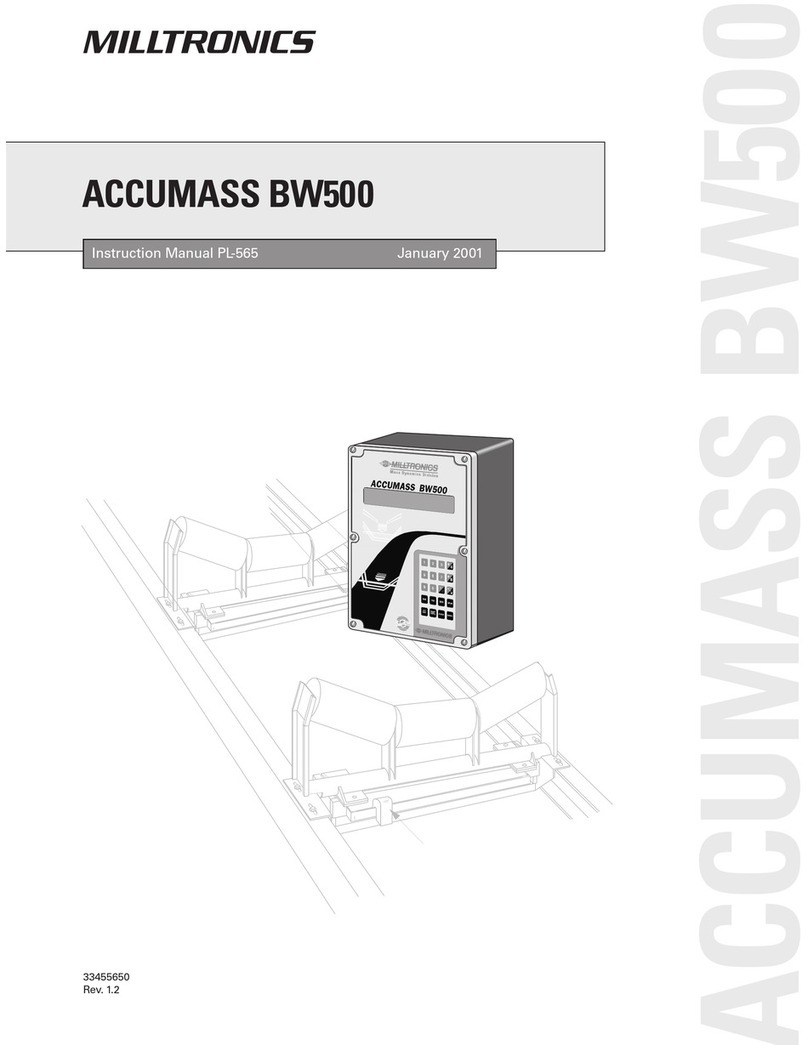
Milltronics
Milltronics ACCUMASS BW500 instruction manual
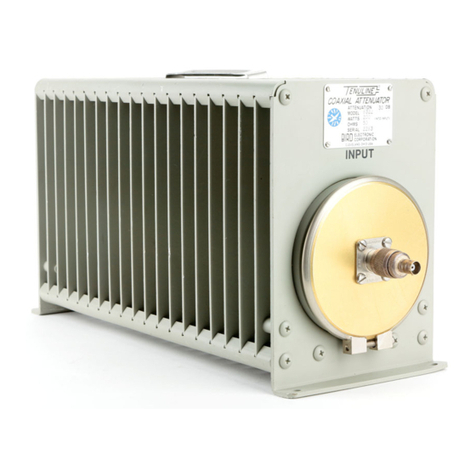
BIRD
BIRD TERMALINE 8400 SERIES Operation manual
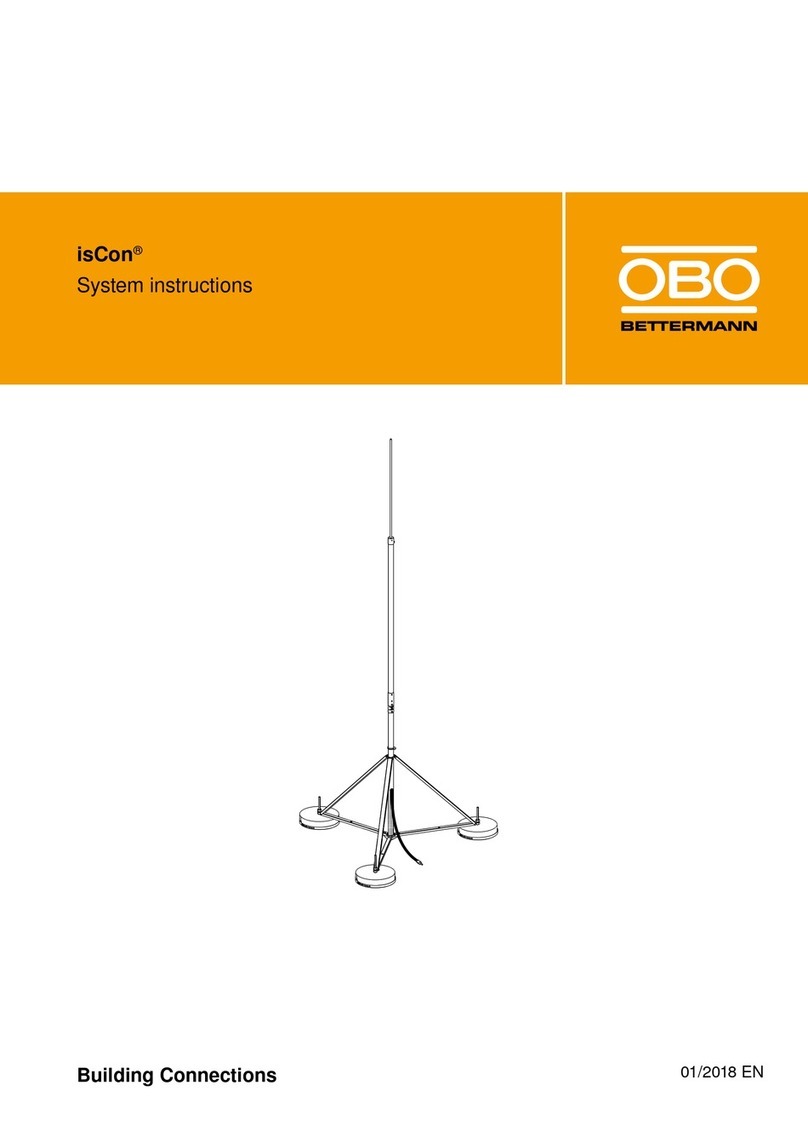
OBO Bettermann
OBO Bettermann isCon Series System instructions
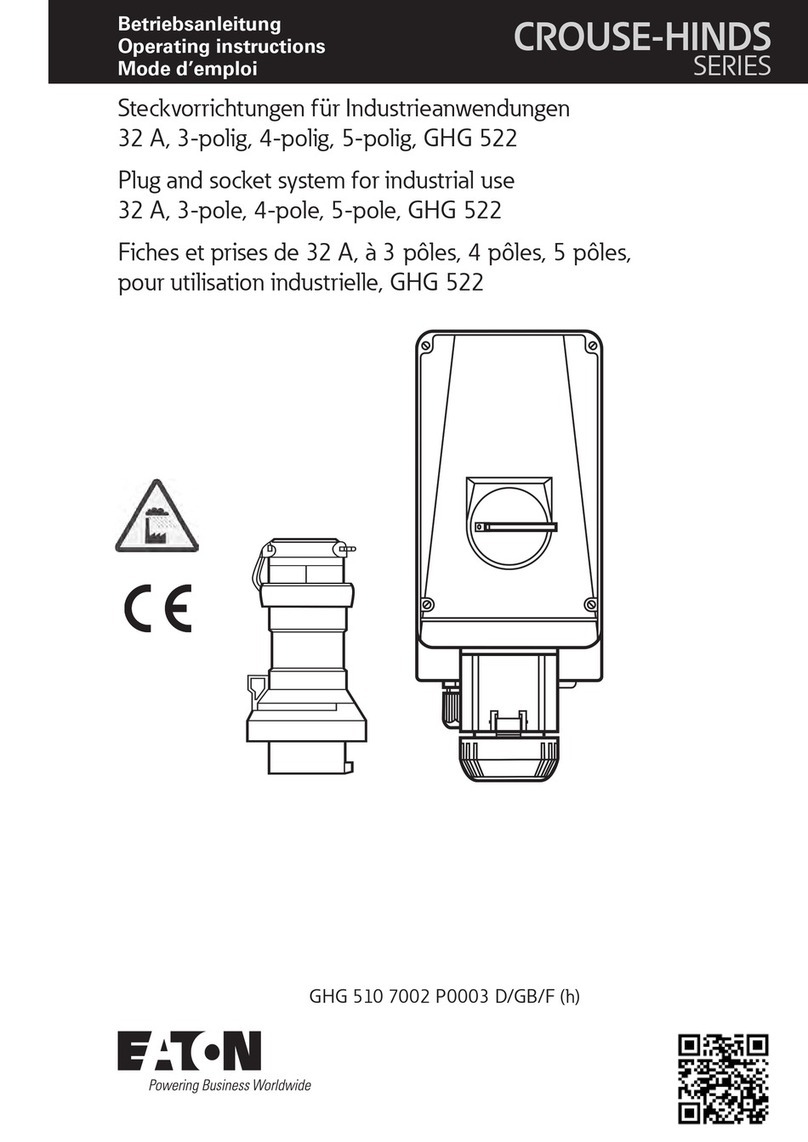
Eaton
Eaton Crouse-hinds series operating instructions
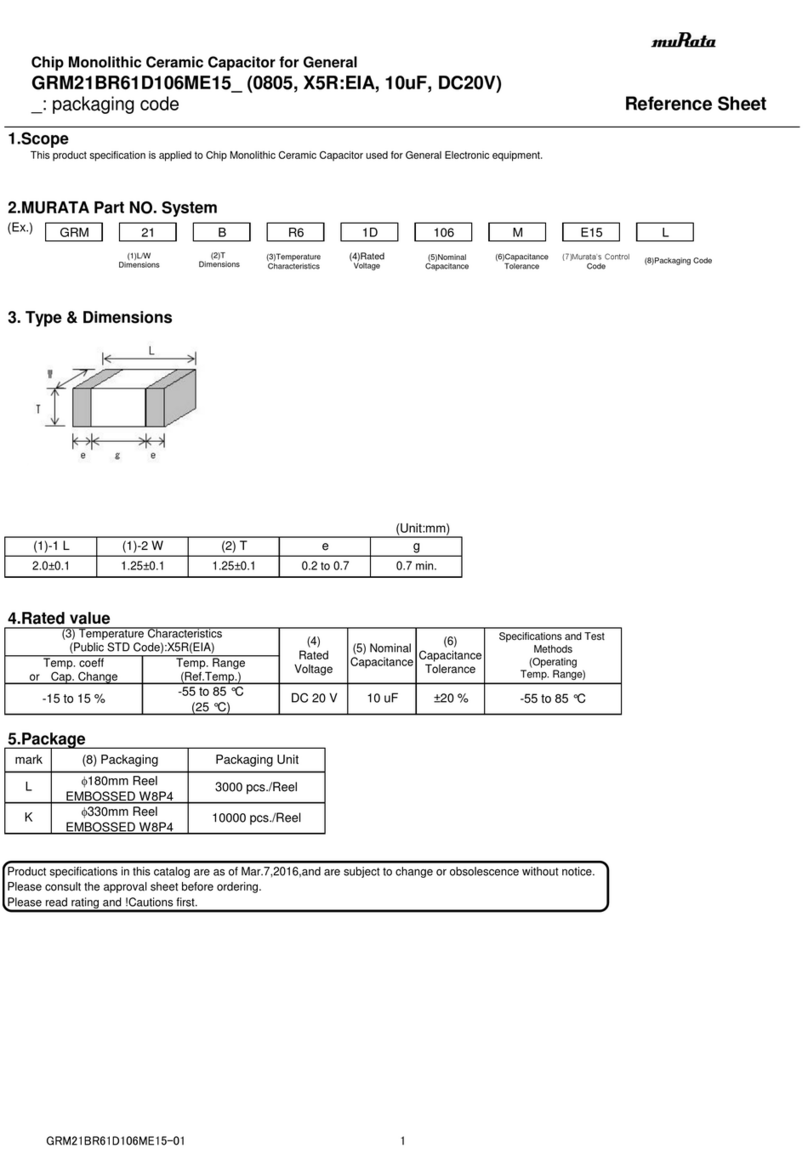
Murata
Murata GRM21BR61D106ME15 Series Reference sheet
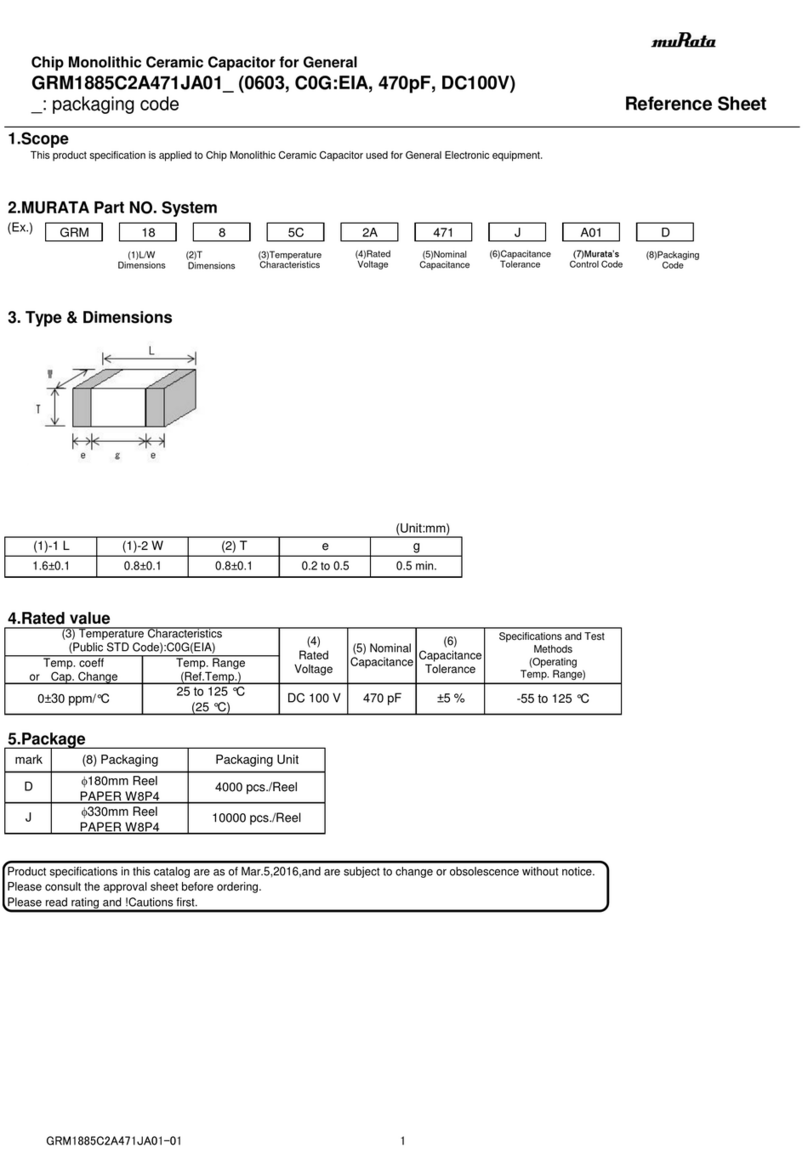
Murata
Murata GRM1885C2A471JA01 Series Reference sheet

